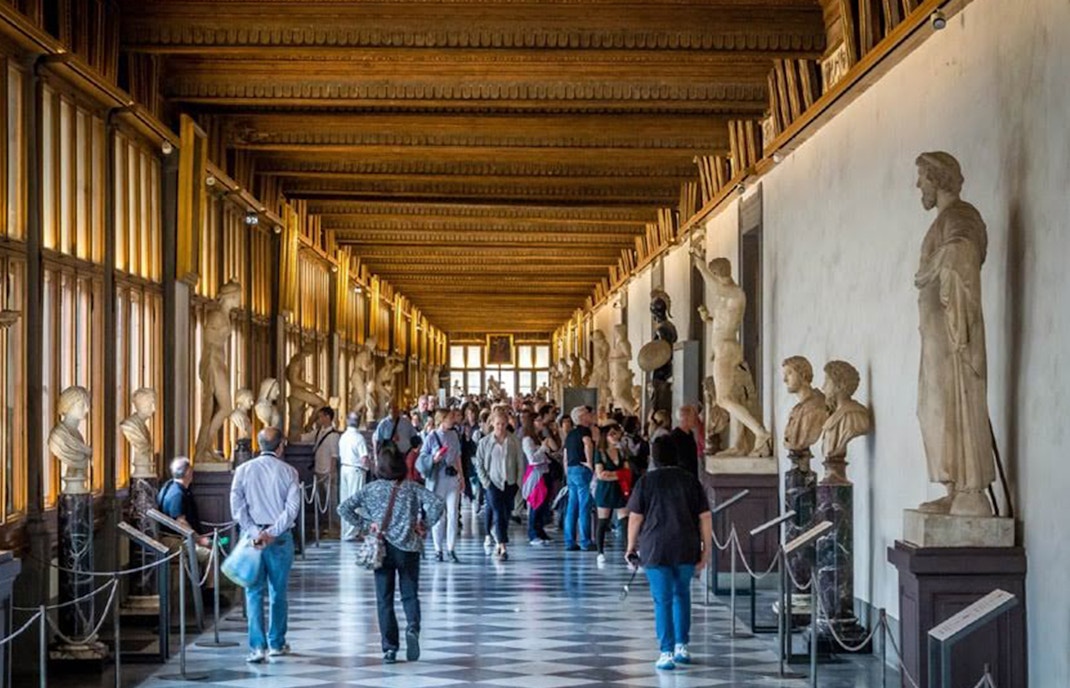Uffizi Gallery timeline
1560: Cosimo I de Medici commissioned Giorgio Vasari to construct Uffizi as the headquarters of Florence's administrative and judicial services.
1565: Giorgio Vasari designs the U-shaped building and constructs the secret Corridor (Corridoio Vasariano) connecting Uffizi to Pitti Palace.
1574: Following Vasari's death, work is taken over by Alfonso Parigi and Bernardo Buontalenti.
1581: Uffizi is opened by Francesco I de' Medice as an art gallery.
1584: Buontalenti finishes the Tribuna, an octagonal room displaying the Medici family’s private collection.
1769: Uffizi was made open to the public thanks to the Family Pact of 1737.
1865: Uffizi was declared a national museum by Vittorio Emanuele II.
1943: Uffizi suffered major damages due to World War II but the majority of artworks were saved due to evacuation efforts.
1966: Uffizi underwent major renovations and expansions.
1989: The Nuovi Uffizi (New Uffizi) renovation project to modernize the halls and increase the display space is set into motion.
1993: On 27 May 1993, the Sicilian Mafia carries out a car bomb explosion in Via dei Georgofili damaging parts of the museum.
2021: Following another renovation that led to an addition of 14 new rooms and a display of additional 129 artworks, the Uffizi reopens.









